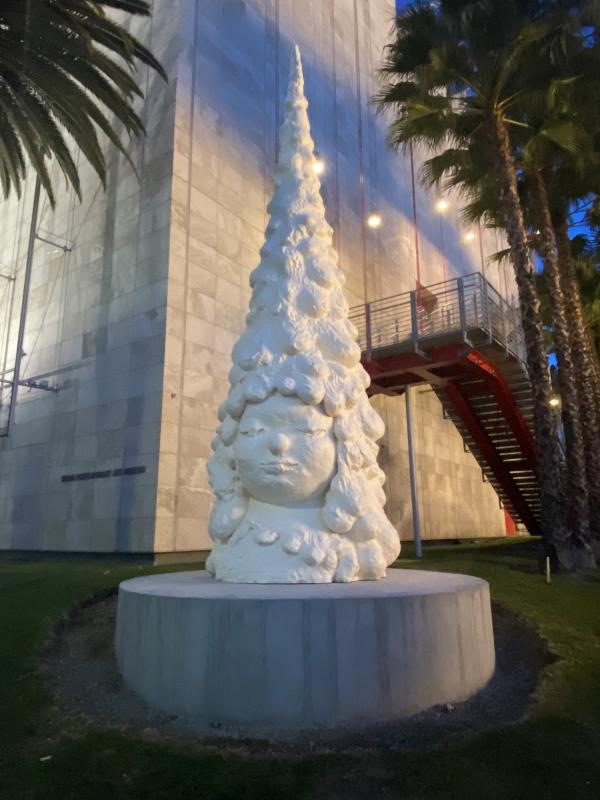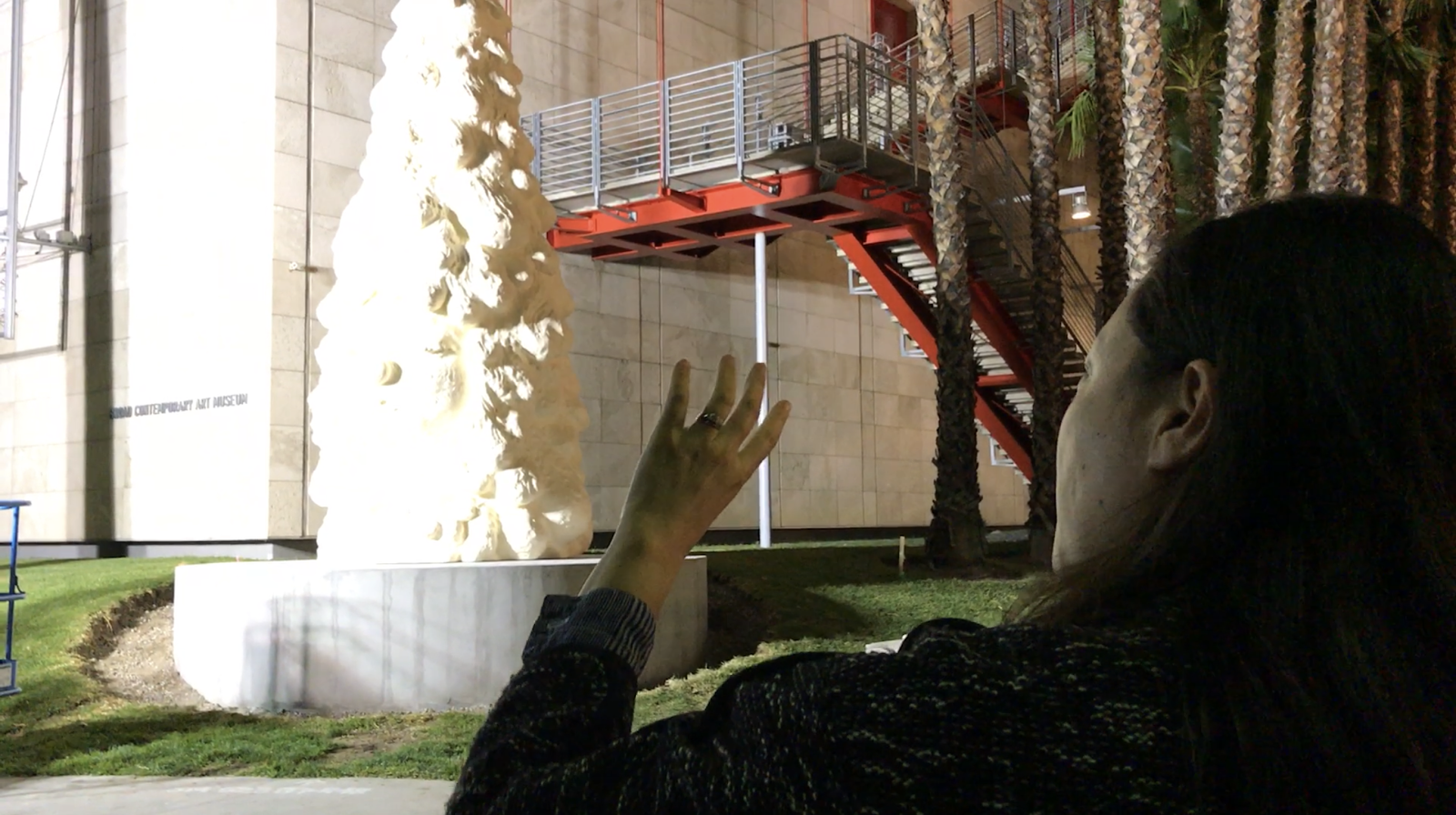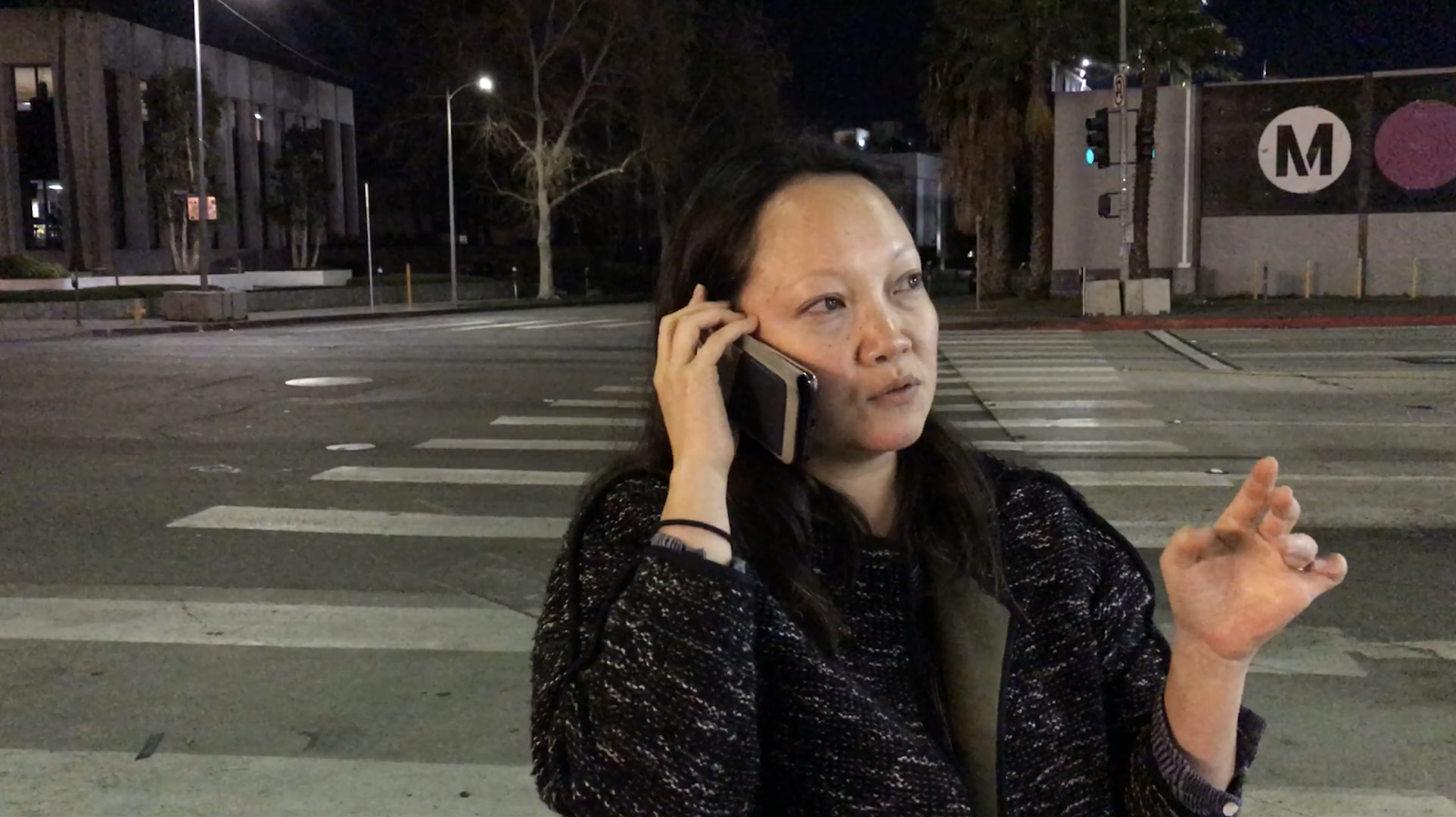The goal was to bring Yoshitomo Nara's Miss Forest—a 25 foot 7 inch tall, 4,446 pound bronze sculpture—to Wilshire Boulevard next to Chris Burden's Urban Light. An idea born in Japan, created in Walla Walla, Washington, and displayed in Los Angeles, California. This post will detail the planning for and installation of the artwork from the perspective of LACMA's Art Preparation & Installation (API) team.
We started thinking about this project months behind the artist and curators. Once they had collaborated with LACMA's exhibition design and production team to narrow down a site and a size for Miss Forest, we began working on a plan for how to install the sculpture. For an artwork this size, factors that need to be considered are the weight and size of the work, what equipment is needed to receive and install it, and how many people and what skills are needed on the art handling team. The piece was not yet fabricated when we began planning, and many of the questions we had for the foundry could not be answered until just a couple months before the installation date. So we needed a flexible plan that could evolve as we learned more details about how the artwork was made, its mount design, and how it would be packed and shipped. Initial plans were very loose and created strictly for budgeting purposes.
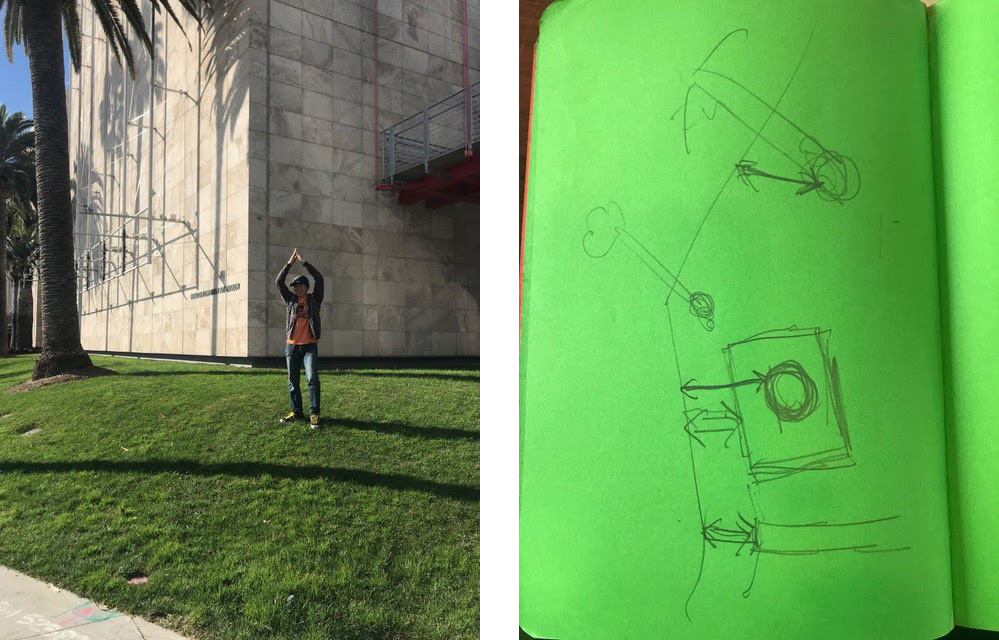
We had many early conversations with Senior Assistant Registrar Elspeth Patient, who was responsible for arranging the shipment, the fabrication company and engineers, and the exhibition design and production team who would design and pour the concrete pedestal that the sculpture would sit on. Our first task was to assess the feasibility of installing the sculpture in the proposed location. We took lots of measurements, looked at obstacles, and estimated the size of equipment we would need based on drawings and technical information from the fabricator.
The biggest challenge was the tight space we had for staging all of the equipment we were going to need. The sculpture location sits behind the sidewalk on Wilshire Boulevard, tucked in front of BCAM, next to two short walls, adjacent to Urban Light. There were temporary power lines running between the sidewalk and the street, making it difficult to pick up the sculpture with the crane from Wilshire Boulevard. We also didn't want to risk flying the sculpture over Urban Light, and opted to keep it as low to the ground as possible for each maneuver. We needed to illustrate our plan, so Lead, Special Projects, Art Preparation & Installation Jordan Mesavage built a digital model of the site in SketchUp. Here is our pre-install timeline:
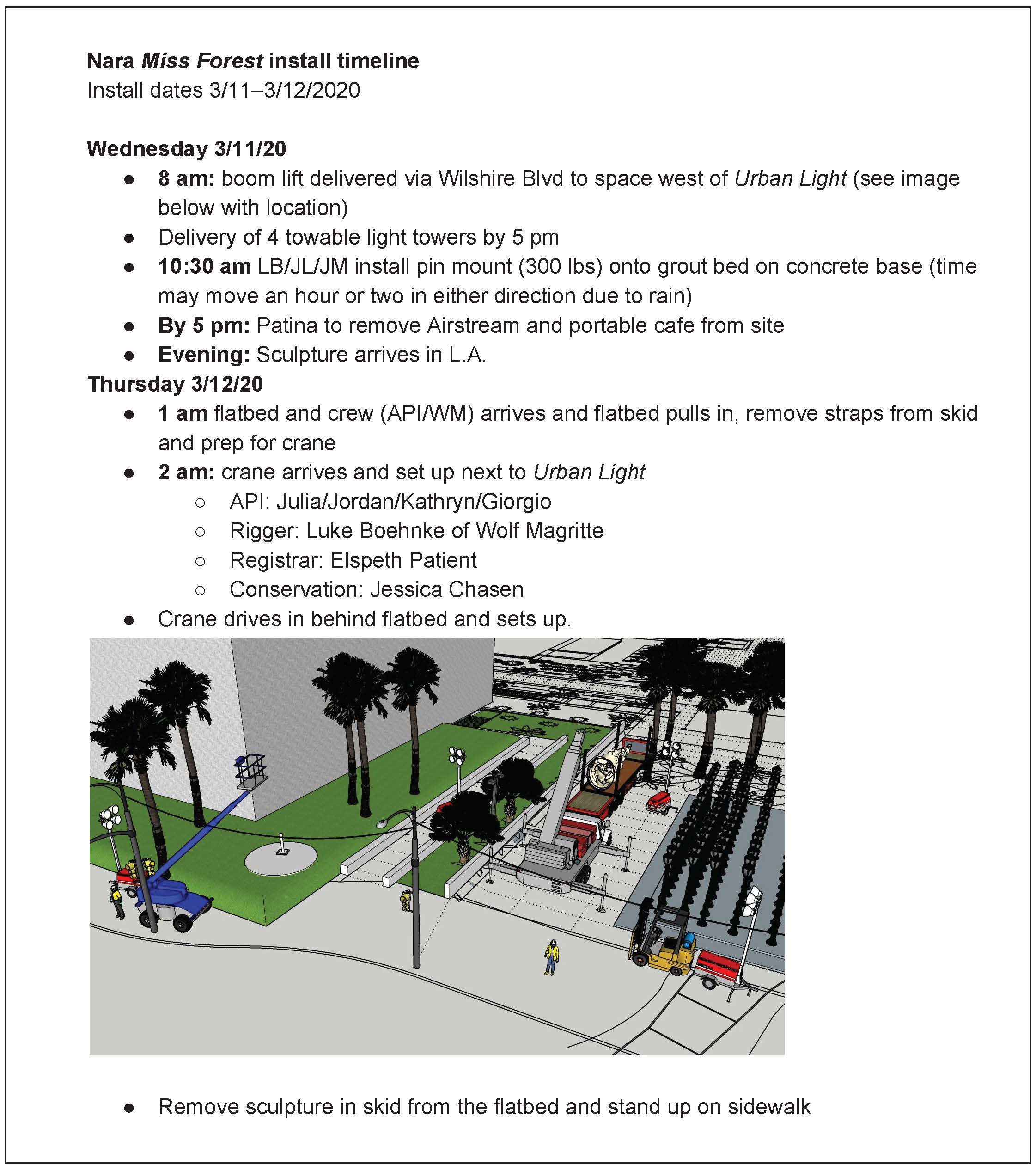
Using this digital model and pre-install timeline, we were able to clearly communicate thoughts to different team members ahead of time, and we settled on a plan that everyone felt comfortable with.
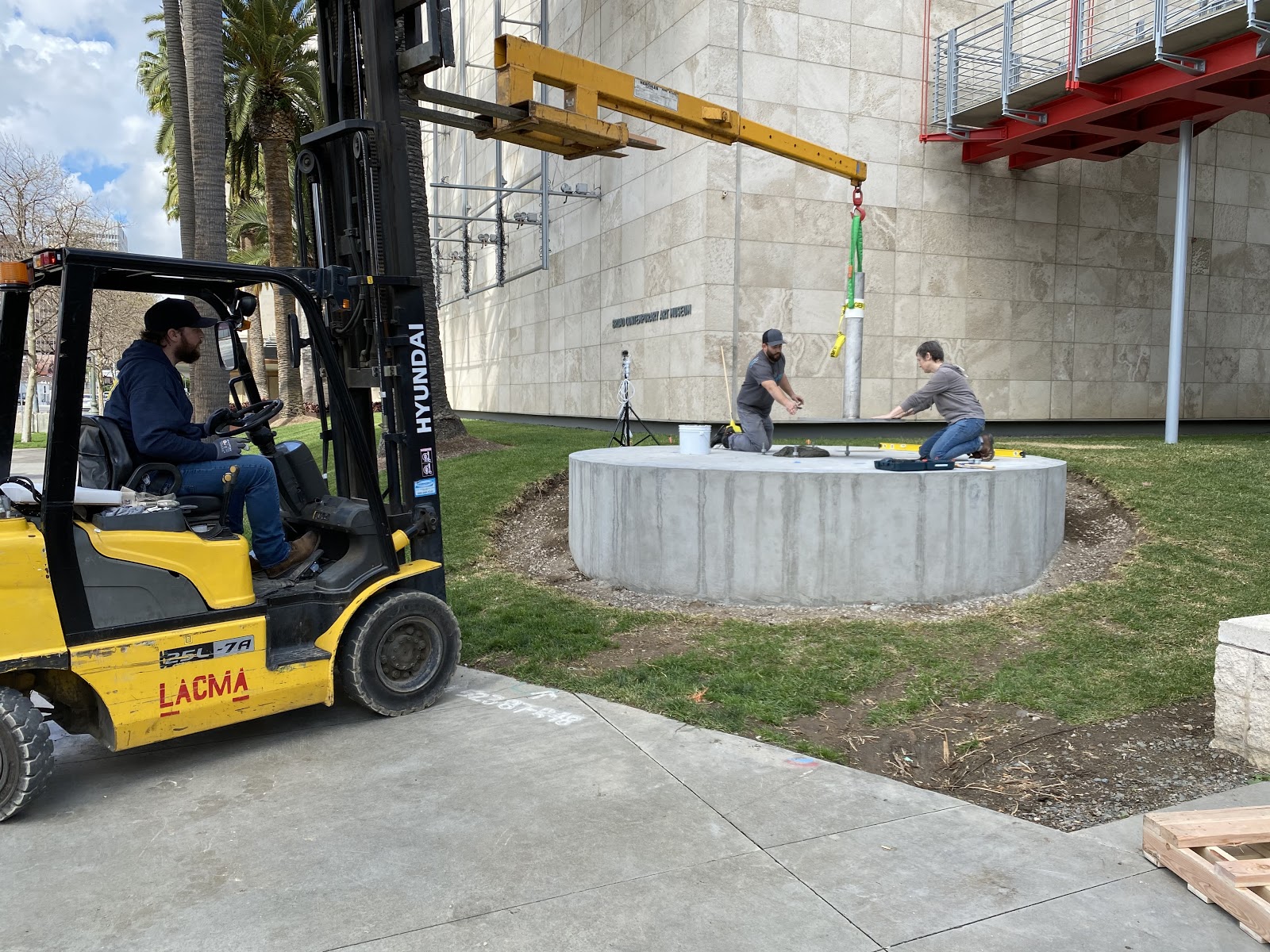
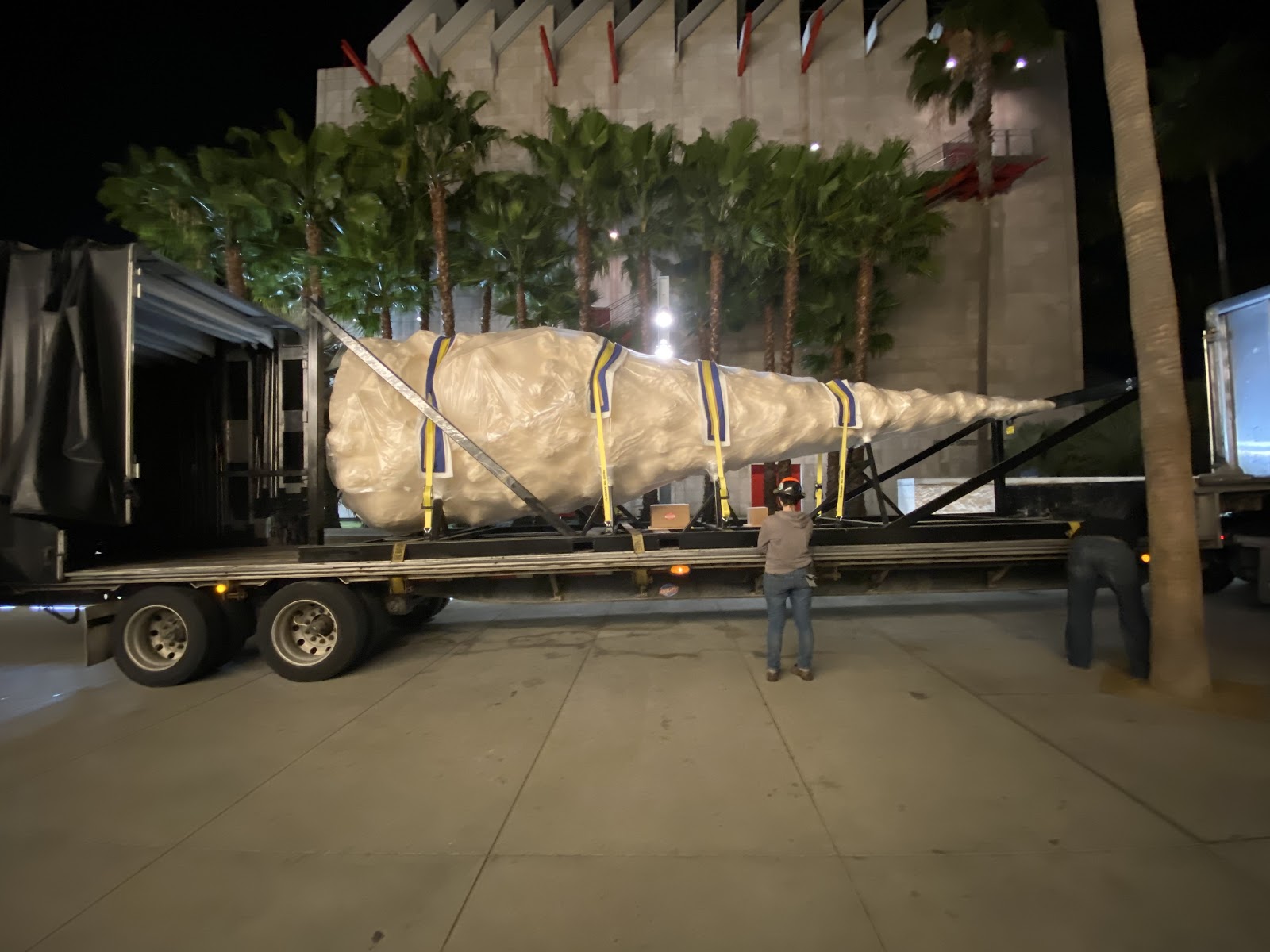
Now that the plan was set and the mount was in place it was time for action. The Flatbed Conestoga Tractor Trailer carrying Miss Forest and the skid drove into position. The sculpture was revealed as the driver carefully folded up the back of the truck like an accordion. At the same time, the 40-ton Mobile Telescoping Crane arrived. The Rigger in Charge (RIC), Luke Boehnke of Wolf Magritte LLC, was the maestro of the event. Luke and the crane operator discussed placement of the crane and the path we had planned for Miss Forest to travel.
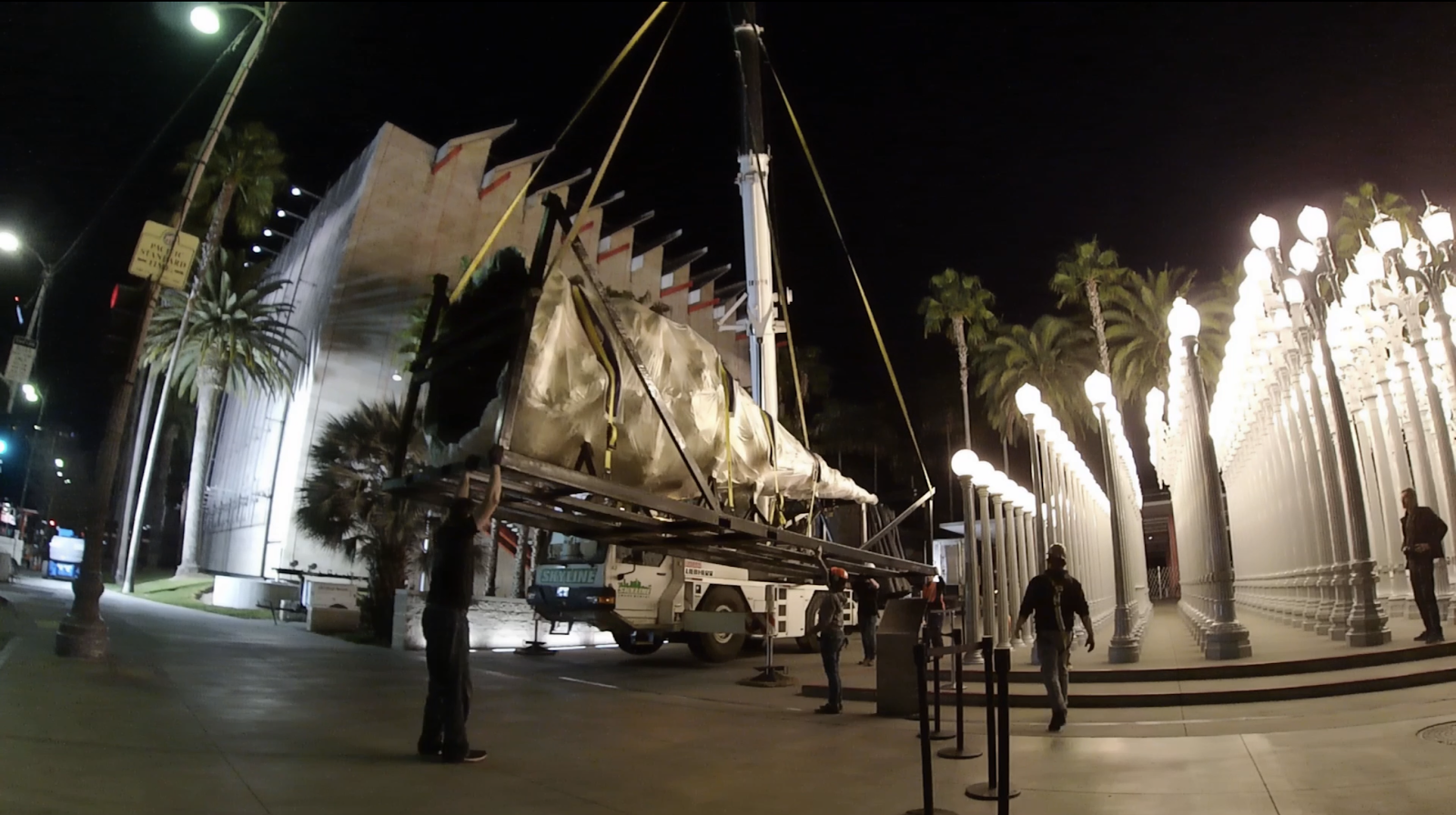
The crane was set in place and the outriggers extended. Rigging was attached to the four top corners of the skid to lift the piece horizontally. Using a series of hand signals, Luke communicated with the crane operator to boom up/down or swing right or left. The sculpture and skid were lifted off the flatbed and weaved through a path between the trucks and Urban Light. Julia, Jordan, Senior Art Preparator Kathryn Pinto, and the truck driver helped guide the piece with hands on each corner of the steel frame. The skid and sculpture were gently placed on 4x4s laid parallel to Wilshire Blvd. While the preps got ready for the next move, Associate Objects Conservator Jessica Chasen began inspecting the condition of the artwork.
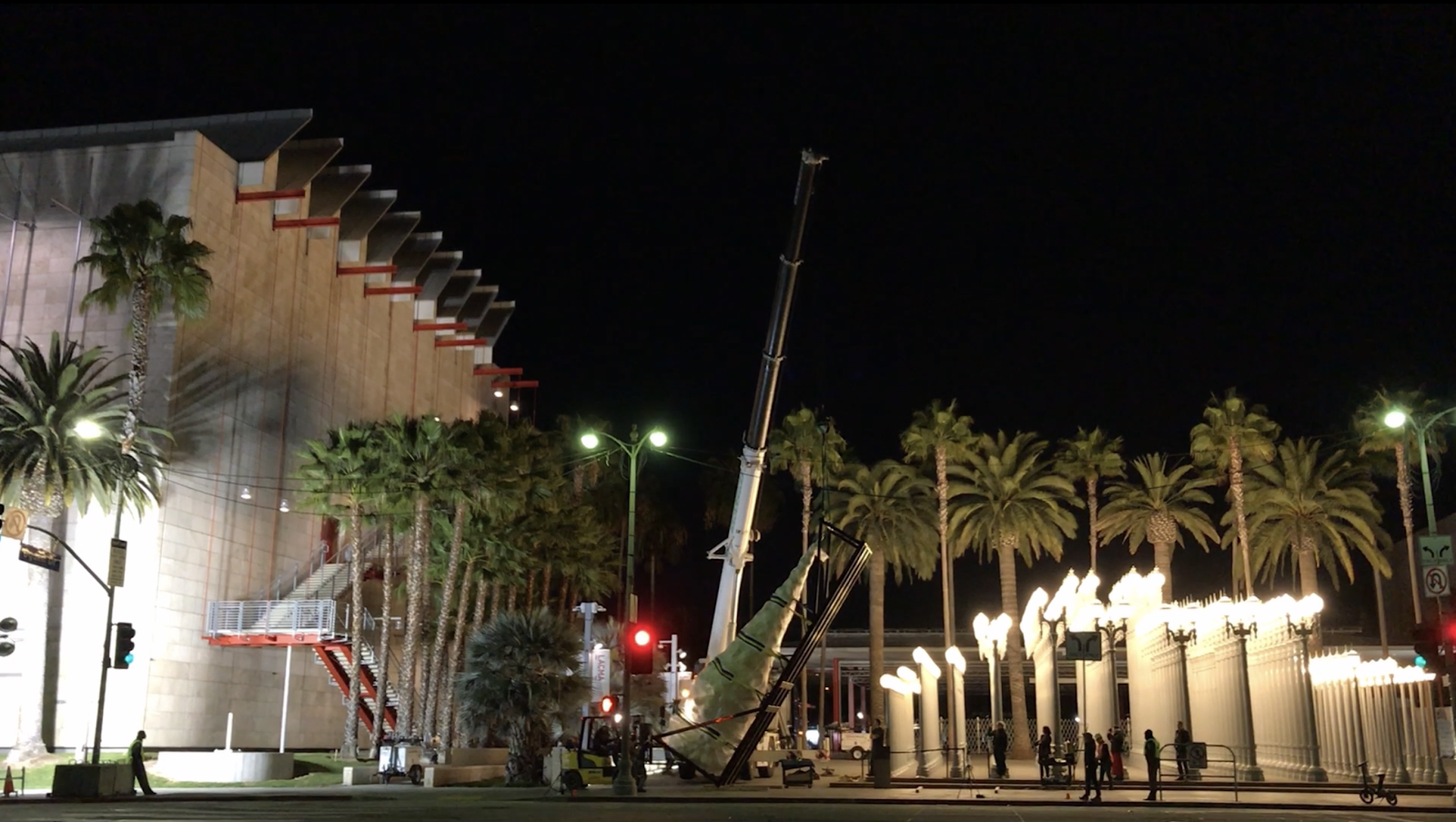
Next, Miss Forest was uprighted to a vertical position utilizing two pick points on top of the skid. The sculpture itself was designed to have a single pick point at the top. A shackle and web sling attached the crane hook to the hoist ring on the top of the sculpture. Miss Forest was now lifted free of the steel skid and swung over to hover above the pin mount attached to the concrete slab. It was then gently lowered onto the pin mount which was fitted into a stainless steel tube inside the sculpture—the receiver for the mount.
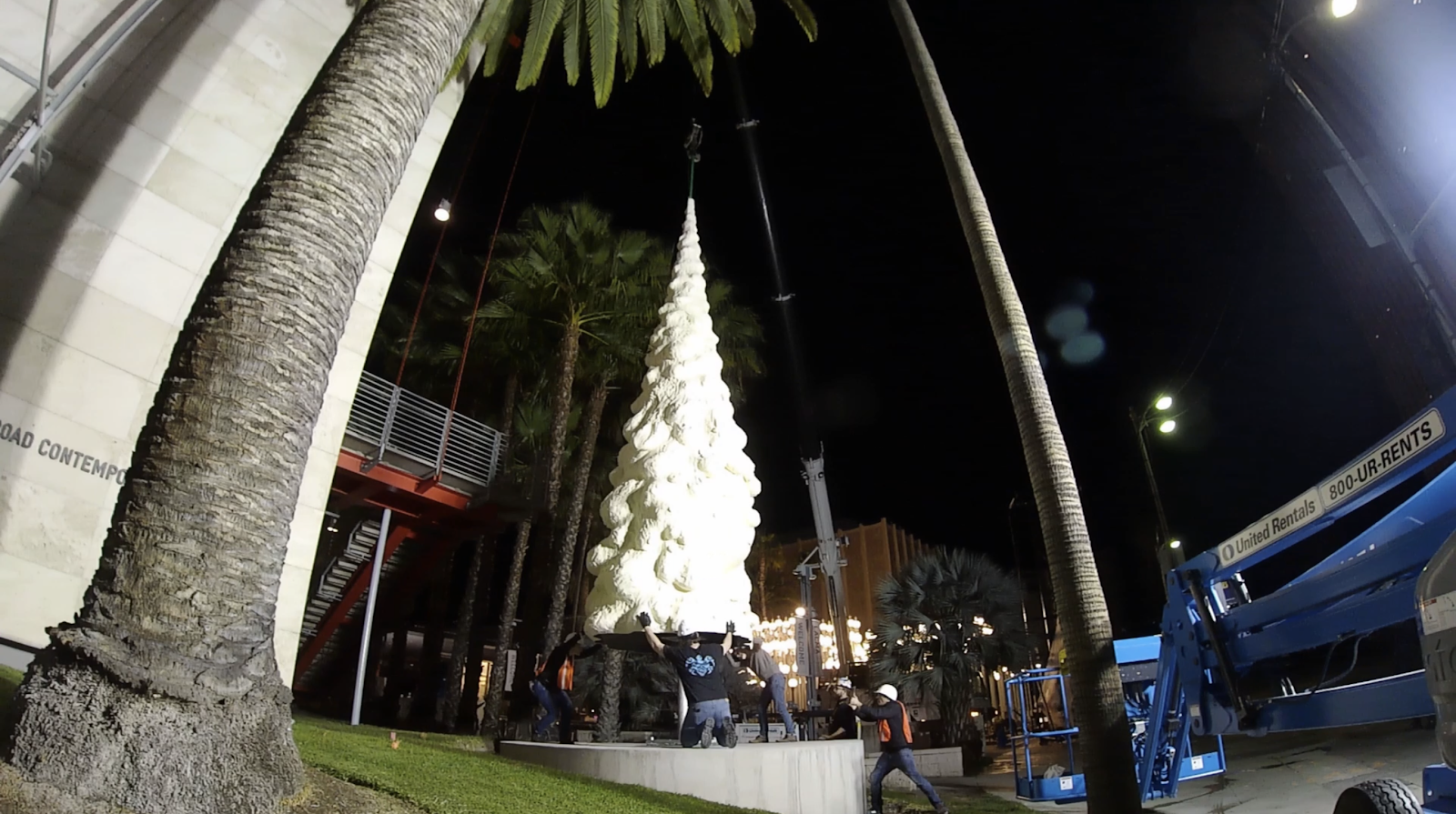
With Miss Forest floating several inches above the final resting place, guest curator Mika Yoshitake spoke on the phone with Yoshitomo Nara who was in Japan. After final approval, the sculpture was gently set into place. Julia and Luke climbed into a telescoping boom lift and removed the rigging. They then set the cap into place and with that, the installation was complete. The team stepped back to admire Miss Forest for a few minutes. We said goodbye to Mika and Satoko, and got back to work with the crane and rigging to lay the empty skid down, and fly it back onto the flatbed trailer so the crane and truck could leave the site. Elspeth made sure the truck driver knew where to take the skid for storage and that the facility was ready to receive it. Once the large vehicles were gone, we cleaned up and put away tools, and Luke took Jessica up in the boom lift to finish condition reporting. Around 7 am, tired and content that everything had gone so smoothly and according to plan, we walked up the street to celebrate with breakfast and beer.



